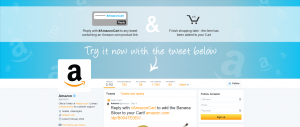Section 1 of the Investor Relations Twitter Strategy Guide
Twitter Strategy Guide for IR Section 2 – Useful, Informative, Legally Defensible Twitter Tweets
For businesses to get value from Twitter, the company must generate a useful and informative feed of Twitter posts that compels users to “Follow” the company’s Twitter account. On the other hand, to avoid any potential problems with tweets made on Twitter, corporations must be careful not to accidentally publish misleading or misunderstood messages. Ensuring that both of these things happen on a regular basis is the crux of a useful IR Twitter strategy.
The person handling the IR Twitter postings should be an experienced professional already versed in the various rules and regulations regarding communications with investors and the general public. All the same rules that apply to phone calls, emails, letters, and in person conversations apply to messages posted to Twitter. In other words, if you can’t say it on a person-to-person phone call with the SEC’s top enforcement watchdog listening in, you can’t tweet it either!
Lastly, do not confuse the conversational nature of Twitter with actual conversation. Every post made to Twitter is in writing! If it couldn’t be typed on official company letterhead with an executive signature at the bottom, then it can’t be posted to Twitter either. This simple distinction can save IR a lot of trouble.
1) – Tweet Daily
Everyone knows Twitter is about fast real-time communication, but it also about constant communication. Twitter feeds with occasional tweets drop quickly from view. Power Twitter users follow dozens or hundreds of other users. Keeping up with all of those tweets requires users to triage the inflow. A once a week message from an account is just too likely to be skipped, missed, or buried to provide value. Don’t worry about posting tweets on weekends or holidays. No one will be surprised when a corporate Twitter stream goes dark during non-business hours.
a) How To Tweet Daily
Coming up with a new tweet every day may seem daunting at first. However, remember that Twitter’s value lies in being part of the conversation, not in just broadcasting your own communications. Responding to direct questions, responding to general statements made in the “Twitter-sphere”, and even responding to media stories or events can (and should) be part of the Twitter strategy. It can be several days or more in between each originating tweet.
2) – No Junk Tweets
Every tweet needs to be worthwhile to keep the company’s Twitter feed on the must follow list for shareholders, potential shareholders, and analysts. No interview about Twitter usage is complete without the declaration that communications are important, and there are no tweets about what was eaten for dinner. Don’t let your tweets become the corporate equivalent of meal tweets.
3) – No Coupons, No Promos, No “Funny” News Links
Unless the IR group is the only official Twitter account for the entire corporation, chances are someone else is handling the smiley face side of social networking for the company. Investor relations is the most difficult Twitter communication channel there is. Don’t make it any harder by trying to be something else. Besides, the people you actually want following your IR tweet stream are serious about being shareholders, becoming shareholders, or analyzing the company. The followers you don’t want are the jokers, pranksters, agitators, looky-loos, or others who are not serious about investments in the company. Don’t give them a reason to follow you. Unlike other accounts that might be looking to increase exposure and publicity, if a IR tweet goes “viral” it is probably a bad thing.
4) Speak With Links – The 140 characters allowed for tweets posted to Twitter is too short to be useful for IR – Period – End of Story – No ifs ands or buts. It is too short. Never forget that.
The maximum protection from any legal or regulatory issue, plus the best way to avoid any misunderstanding or confusion, is to let links do the talking.
In an earlier article we discussed examples of Twitter trouble for IR. The carefully crafted statement and meticulously crafted wording in an official company statement about a recent dividend cut was not short enough to be tweeted. Trying to tease out a shorter, but equally accurate and legally sufficient tweet of 140 characters is liability suicide. However a tweet that directs Twitter users to the original statement is not only completely defensible, but incredibly easy.
Example IR Tweet:
@CrankyInvestor – Look here for that information about the dividend cut. http://bit.ly/6UKFaR
This tweet is well under 140 characters. It provides a link to a webpage with the original full length statement complete with all disclaimers and notices.
Notice the difference between a response to a Twitter user’s specific tweet and an unrelated random tweet about a new press release. Which brings us to…
5) Don’t Tweet Press Releases – Remember no junk tweets! If people wanted to read the company’s press releases whenever they just happened to come out, they would be reading them on the website, or more likely subscribed to either email delivery, RSS feed, or other notification. Tweeting a link to a press release or other information only when asked about, makes it a relevant and helpful tweet. Doing the same thing at 1:14 P.M. for a press release sent out at 1:13 P.M. makes it tweet-spam.
6) ALWAYS: “Look into,” “Check on,” “Investigate,” “Pass On” – Speed is what makes Twitter so powerful. It can also become intoxicating. Resist the temptation to fire off replies or other tweets at the spur of the moment. Twitter may be real-time, but it is not chat.
The reflex tweets sent right away are the ones that will end up causing trouble down the road. Unless you have already considered a similar reply and have a link at the ready, don’t tweet. If a reply is required, but none is ready, simply tweet that you will look into it and get back to them. For users that offer suggestions or other unsolicited advice or information, simply say that you will pass their comments on, or otherwise make sure the right people see them. Don’t promise anything.
@CrankyInvestor – I’ll check on that and let you know.
7) NEVER SAY: Promise, Guarantee, Never, Always, Obviously… – Certain words carry a literal meaning that you do not want associated with things you say on behalf of investor relations. These words include any form of promise, any form of complete exclusion (never) or complete inclusion (always). Also troublesome are words that imply that there is no question about something, or that something is common knowledge. These are standards the IR group does not want to be held to in a court room or regulatory action. Create a list of banned words and post them on every computer that will be used to send official tweets.
8) Be Careful With Re-Tweet – Recall all the hoops the IR department had to jump through to link out to another website while staying in compliance with all rules and regulations. Re-tweeting is just as dicey. Whenever possible, avoid it altogether.
These tips should get most IR groups up and running with a successful Twitter for business strategy. What comes next is being able to successfully manage Twitter conversations for businesses. For that, additional utilities and a little bit of advanced Twitter know how will be in order.
Lucy is Editor at Corporate Eye



I wish all Company’s would read this article. I could not agree with you more! Too many large Company, Publishers, and Retailers are not understanding Twitters Branding and IR effects and results. Great blog!